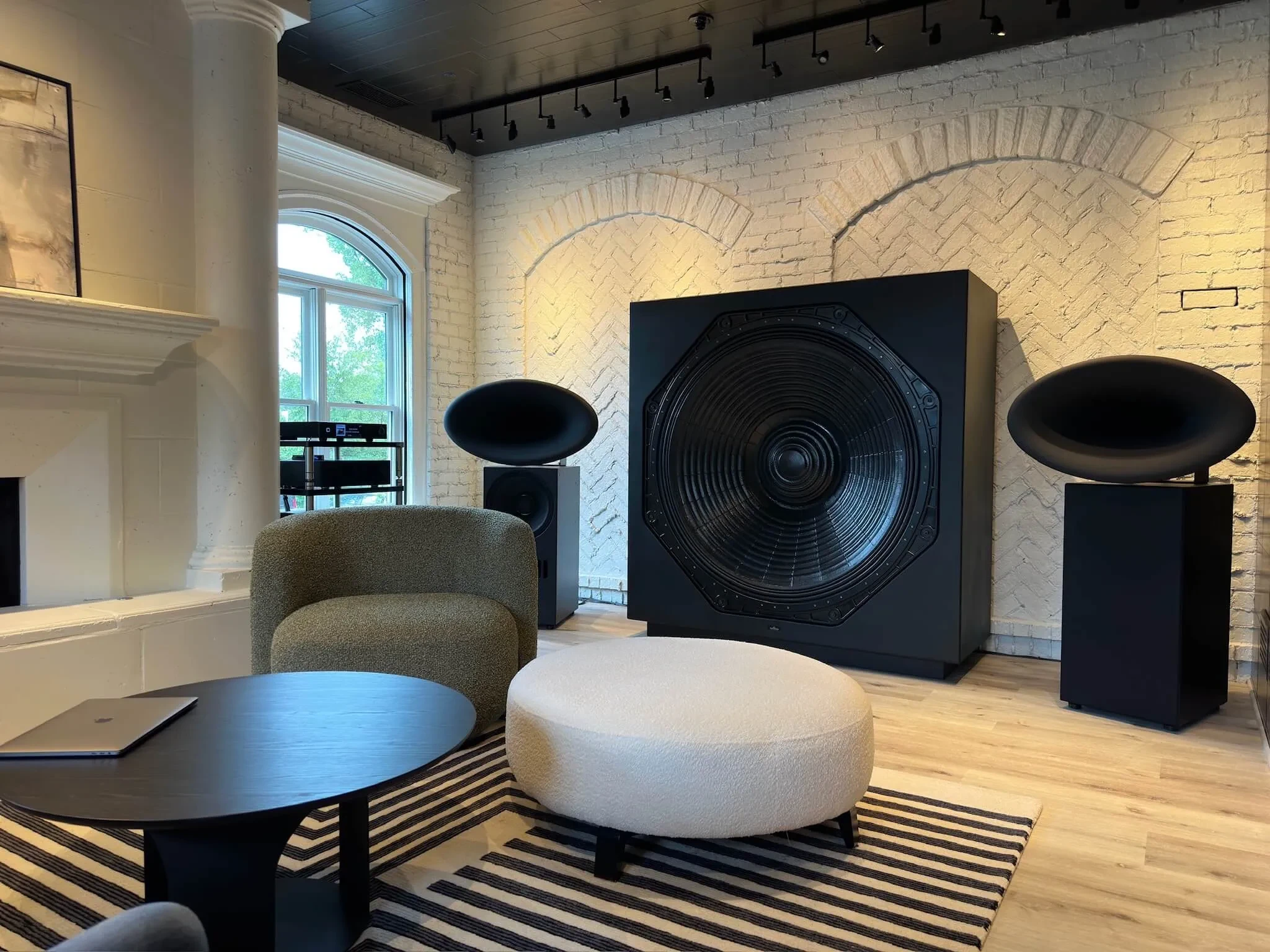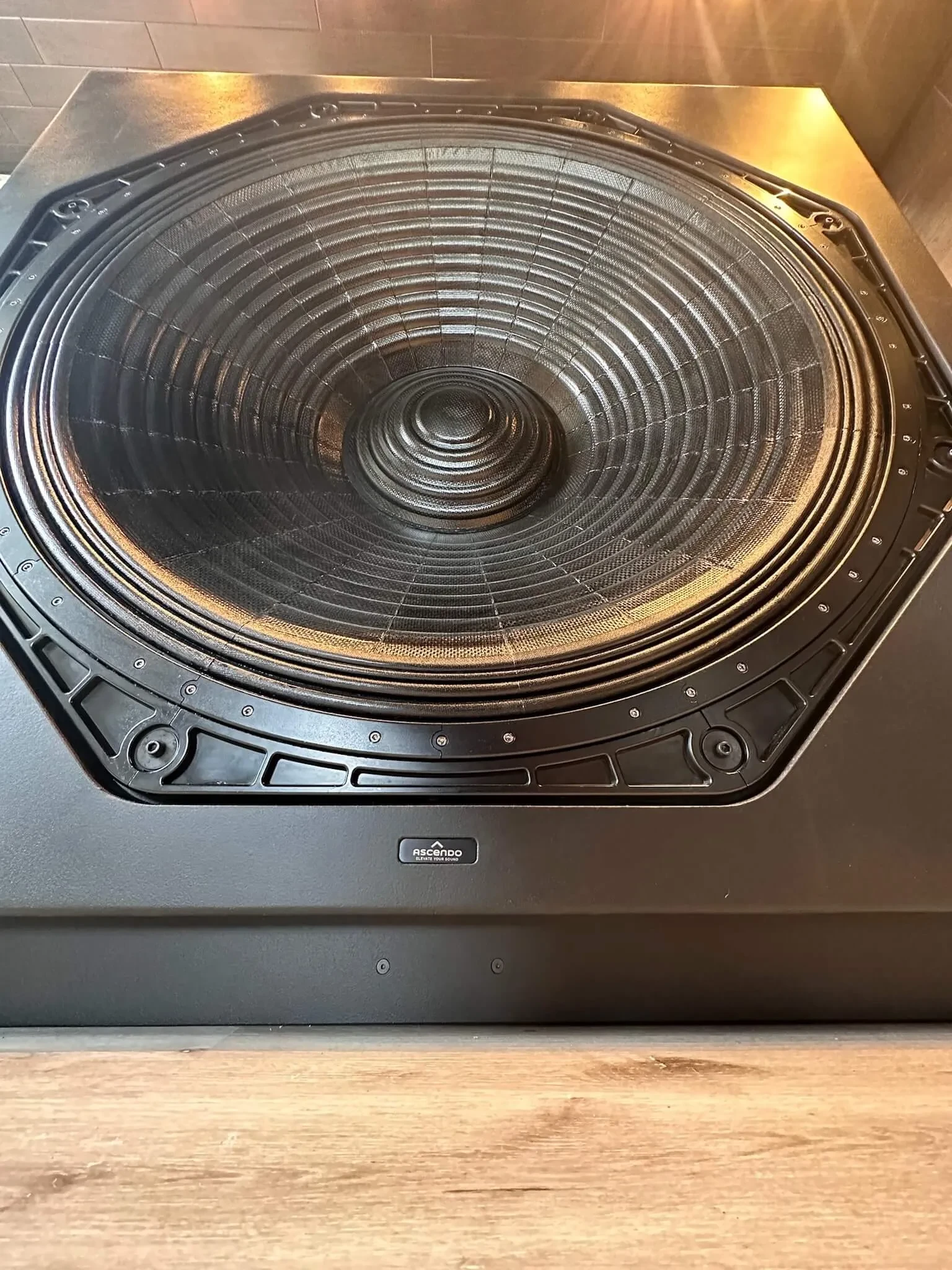Subwoofers play a critical role in managing low-frequency content, and the presence of subwoofers in music playback systems is not a new concept. Not all subwoofers, however, are created equal, and their performance in a music system can often leave music fans disappointed.
That’s because most subwoofer manufacturers prioritize “movie bass” that focuses on a limited frequency response. This "one-note bass” results is an annoyingly disconnected system.
Linear Subwoofers to the Rescue
The answer to this conundrum is linearity. Linear subwoofers deliver a more authentic representation of the audio signal, reproducing bass frequencies with a balanced output across a wider range. Properly designed subwoofers extend higher in frequency, allowing for a more seamless crossover with the main speakers.
Just as the woofer in a good three-way loudspeaker relieves the stress of bass frequencies from the smaller midrange—allowing it to focus on the reproduction of voice—a linear subwoofer can do precisely the same for the woofer. This separation of duties allows both the subwoofer and woofer to do its own job more efficiently, delivering a lower distortion and a more harmonious experience with no gaps in reproduced frequencies. This results in a more lifelike experience as your ears tell your brain to relax, letting you melt into the content, instead of attempting to reconcile why what you’re hearing isn’t quite right. This reconciliation is often subconscious and usually manifests in listening fatigue.
Get Low with Infrasonic Frequencies
Now, take it a step further and apply this concept of sharing duties to infrasonic frequencies down into the single Hertz digits. Infrasonic subwoofers reproduce frequencies below the range of human hearing, adding a new layer of audio depth that you feel rather than hear. Like a linear subwoofer effortlessly crosses over to seamlessly blend with the woofer, infrasonic subwoofers pick up where traditional subwoofers leave off on the bottom end.
ASCENDO’s wide range of infrasonic subwoofers begins at 24 inch models and extends up to 64- and 100-inch models—the largest subwoofers in the world. As is the case with a woofer versus a midrange, reproducing even lower octaves requires substantially more cone surface area, which explains the large size of ASCENDO’s infrasonic subwoofers needed to pressurize big rooms at sufficient SPLs without distortion.
There is a myth that a subwoofer with a big cone is sluggish, slow, and unresponsive. That’s because larger cones are often powered by insufficient motors. ASCENDO’s big infrasonic subwoofers, however, have the proper motor structure behind them. This, coupled with the right enclosure size, make these behemoths some of the most responsive and efficient subs in ASCENDO’s entire line and on the market today.
Why Music Systems Need Infrasonic Bass
Many movie soundtracks contain ultra-low-frequency content, which is fueling the popularity of infrasonic bass in home theater. But the transformation that happens with music when infrasonic subwoofers in the system relieve traditional subwoofers from the burden of the deepest bass frequencies is also remarkable.
Music becomes incredibly involving, transcendent, and natural. While stereo listeners might question the presence of such low-frequency information in their music recordings, the reality is, there's more than you know. Much of what we perceive in music involves harmonics, and while not all recordings contain extremely low-frequency content or harmonics, those that do definitely benefit from proper reproduction!
Bottom line is that a finely tuned system—one in which tweeters, midranges, woofers, subwoofers and infrasonic subwoofers work in perfect harmony—makes music effortless, enhancing enjoyment from the highest to the lowest frequencies. This cohesiveness enriches the musical experience—revealing ambient clues in the music that fosters a spatial quality in the low bass region that opens up the room and makes it feel significantly larger.
Until experienced firsthand, most people don’t realize the depth of information and enjoyment that can be uncovered in their favorite music. And once they do, they can never go back to a disjointed, fatiguing, and non-linear musical experience.



